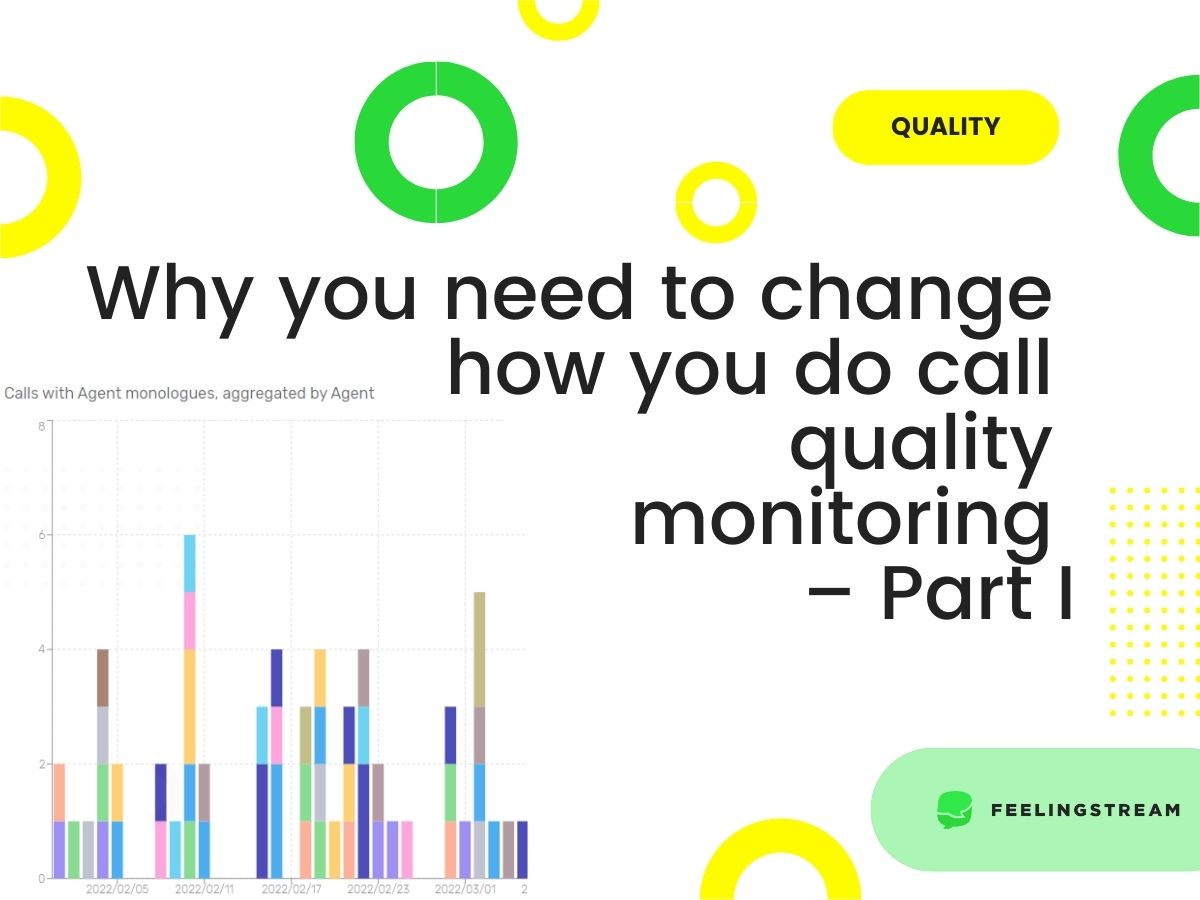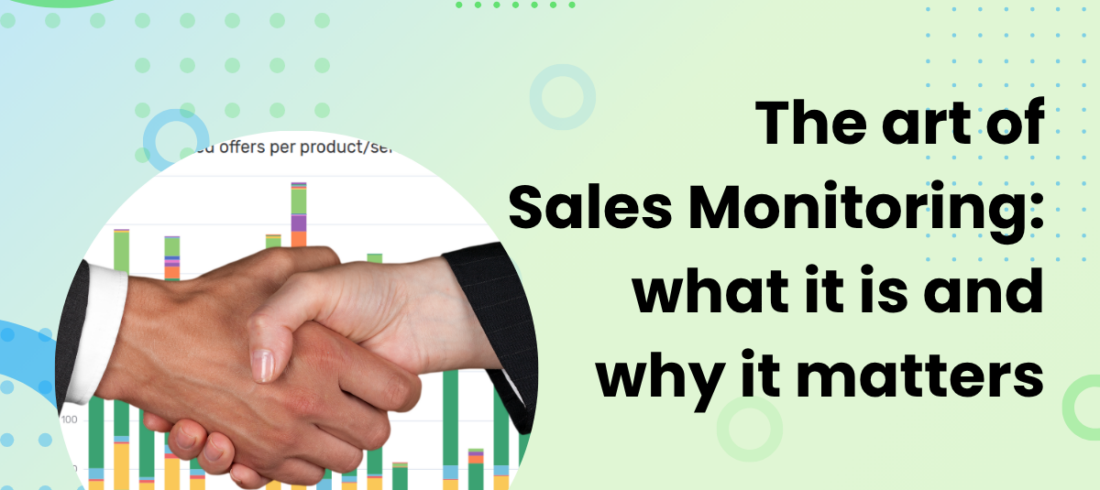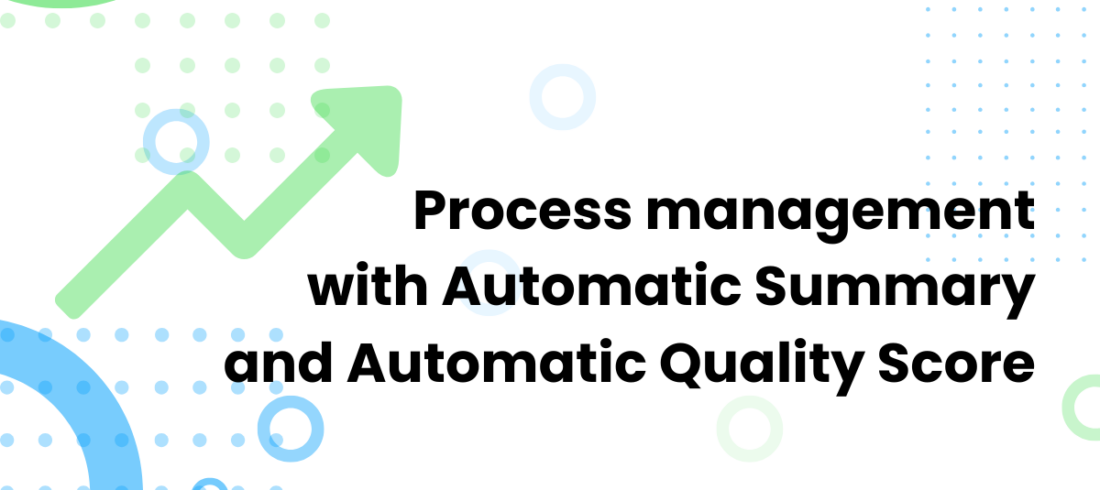Call quality monitoring is a central part of running a call center and ensuring high customer satisfaction rates. Most quality managers spend a large portion of their time listening to recordings of customer service agents speaking to customers.
The amount of agents per quality manager can be quite high and listening to calls is time-consuming work. Therefore, the manager typically checks only under 1-2% of agent calls .
This post is the first in a series of posts on how to move from manual call quality monitoring to an automated solution using Feelingstream. In this post we focus on what currently is the standard in call quality monitoring. We also show how it can be almost fully automatized using Feelingstream.
How analyzing a small, random sample of calls does not provide statistical overview
A typical full time customer service agent takes 5+ calls every hour for approximately 160 hours every month. Compare that to the standard in most companies where the quality manager is only able to check 5 random calls per agent for quality. That is less than 1% of an agent’s calls per month!
Such a small sample unfortunately does not adequately represent a whole month’s worth of calls or call quality in general. This means that if a customer service agent follows the call guidelines well in the chosen calls, but struggles in other calls that were not assessed, then a quality manager is not able to make a valid assessment of an agent’s competence.
When the amount of calls agents get coached on is less than 1% of their total calls, areas where agents struggle to follow call guidelines may fly under the radar.
Why it is difficult to do call quality monitoring more efficiently
In order to provide targeted training that focuses on areas where agents genuinely need further support, it would be more beneficial to immediately find those calls in which agents struggle with following call guidelines.
This is quite difficult though. When a quality manager wants to find calls with issues, s/he would have to work through all call recordings manually. That is something that quality managers simply cannot spend as much time on as they need.
In fact, lack of time is an issue we often hear quality managers report to us.
So, when quality managers see a live demo of our call transcription and analytics solution, they immediately understand the possibility our platform can give them – to focus on fixing issues rather than spending a lot of time looking for them.
How you can automatize call quality monitoring using Feelingstream
Feelingstream’s speech-to-text AI solution can transcribe all customer service calls and make them searchable based on topics. The platform gives quality managers the possibility to move from manual call quality monitoring to nearly automatized monitoring.
This means that quality managers can get a statistical overview of most common call quality issues. They save their searches for ongoing monitoring and get automatic reports. Then they use all of this insight to help their agents reach performance goals.
Feelingstream helps quality managers do their work much faster and more efficiently than any manual search for calls ever could.
When you base call quality monitoring on automatized reports of current call quality issues, then you can take your customer service to a completely new level. This has a direct impact on both customer satisfaction rates and on reaching sales targets.
If you would like to learn more about our call analytics features, get in touch.
In our next post in this series, we cover typical problems that our customer conversation platform can solve for businesses.




